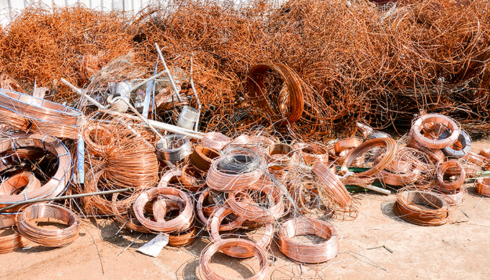
copper recycling plant
As India accelerates its infrastructure and industrial growth, copper is fast becoming one of the most essential raw materials. From powering metro cities to fuelling green innovations like EVs and solar panels, copper lies at the heart of modernisation. With copper demand in India expected to touch 2,560 kilo tonnes by FY30, the focus is shifting towards copper recycling as a sustainable and economically viable solution.
This shift has opened up a new era for copper recycling companies in India, many of whom are working to bridge the demand-supply gap using scrap copper sourced locally and globally.
But how do you evaluate a reliable copper recycling plant in such a dynamic space?
Here’s a complete guide:
1. Operational Efficiency
Whether you are searching for a large-scale copper recycling plant or a copper factory, operational efficiency is non-negotiable. A modern plant should be equipped to handle high volumes of copper waste and convert them into high-purity copper products like rods, billets, or ingots.
Look for plants that:
- Use automated crushing, shredding, and sorting technologies for faster scrap copper processing.
- Offer consistent purity standards compliant with BIS (Bureau of Indian Standards) or global benchmarks.
- Manage diverse types of copper scrap, from insulated copper wires to WPCBs (Waste-Printed Circuit Boards) and HVAC (Heating, Ventilation, and Air Conditioning) tubing.
With India’s secondary copper market growing rapidly (expected to touch 55% of total copper demand by 2030), only those copper recycling companies in India that scale efficiently will stay relevant.
2. Environmental Compliance and Green Practices
Beyond profitability, copper recycling is also about sustainability. A trusted copper recycling plant should prioritize reducing emissions, minimizing waste, and complying with pollution norms.
Here’s what to look for:
- CPCB (Central Pollution Control Board)-approved plants with air and water pollution controls in place.
- Transparency in environmental impact reports and a clear commitment to India’s circular economy goals.
- Industry certifications
Why it matters: Copper recycling uses up to 85% less energy than extracting virgin copper, significantly lowering the carbon footprint.
Plants that consistently meet compliance norms also tend to foster long-term trust among both industrial copper buyers and sustainability-conscious clients.
3. Strong Sourcing and Buyer Network
The backbone of any successful copper recycling company is a well-established scrap copper supply chain. As copper demand rises across industries like transportation, construction, and consumer durables, access to consistent scrap sources becomes vital.
Here’s what distinguishes a reliable plant:
- Steady intake of copper scrap from construction sites, electric motors, and insulated wires.
- Established relationships with scrap copper importers—India imported over 310 kT of copper scrap in FY24, mostly from the UAE, Saudi Arabia, and the US.
- Linkages with copper buyers, particularly in manufacturing hubs that use recycled copper for wires, pipes, artefacts, and machinery.
Companies like Jain Metal Group, known for their extensive network and industry experience, are setting benchmarks in integrating global scrap sourcing with high-purity copper output for a wide range of buyers.
Choose Smart, Choose Sustainable
India’s copper recycling landscape is expanding fast. Whether you are a copper buyer, a business managing copper waste, or a supplier dealing in scrap copper, the importance of working with a reliable and certified copper recycling plant cannot be overstated.
By focusing on efficiency, environmental responsibility, and robust buyer-supplier networks, you not only ensure quality outcomes but also contribute to a more sustainable and self-reliant India.



